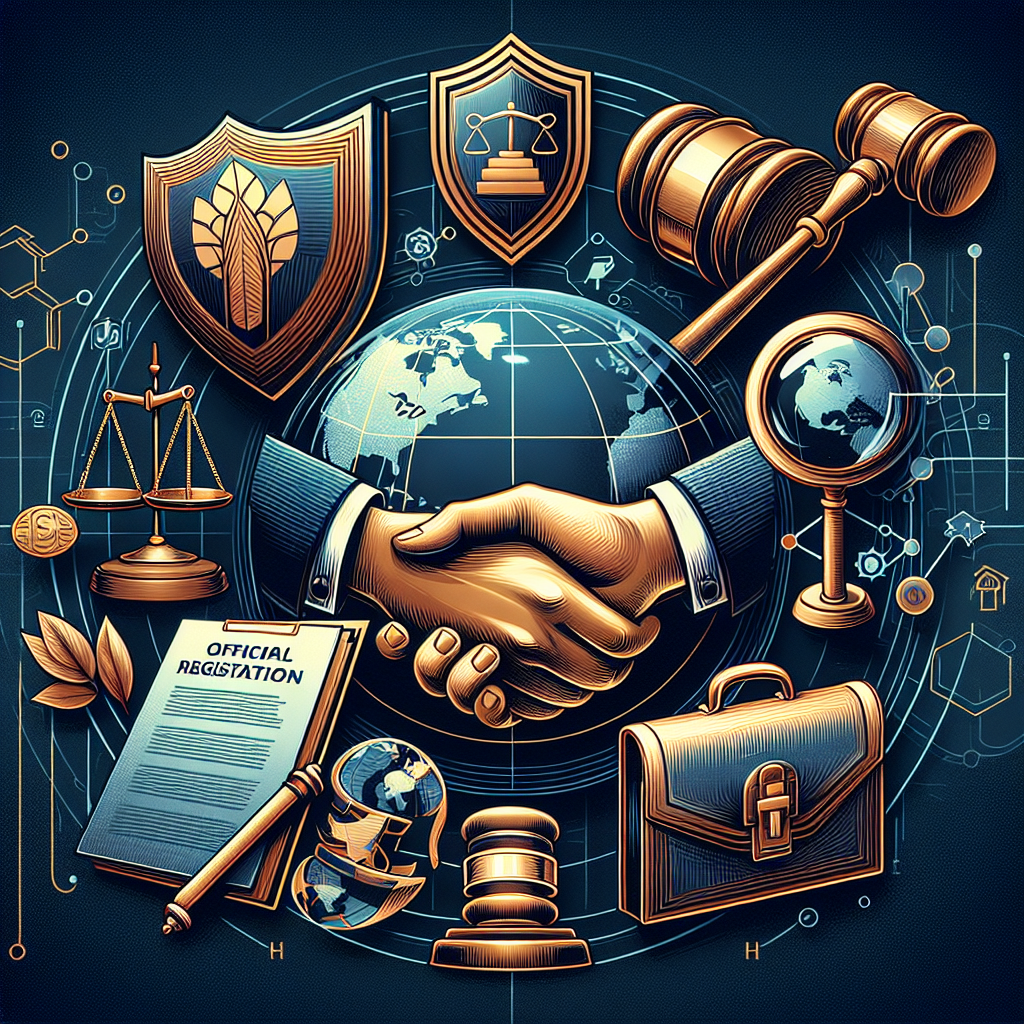Licensing Agreements: A Win-Win for Innovators and Businesses
Understanding Licensing Agreements
Licensing agreements are legal contracts that allow one party (the licensee) to use the intellectual property (IP) of another party (the licensor) under specific conditions. These agreements are crucial in various industries, including technology, pharmaceuticals, and entertainment, as they facilitate the sharing and commercialization of innovations. Key components of licensing agreements typically include the scope of the license, financial terms, duration, and conditions for termination. By clearly defining these elements, both parties can ensure a mutually beneficial relationship that leverages each other's strengths.
Types of Licensing Agreements
Licensing agreements come in several forms, each tailored to different business needs and strategic goals. Understanding the distinctions between these types can help parties choose the most appropriate arrangement for their situation.
Exclusive Licensing
Exclusive licensing agreements grant the licensee sole rights to use the licensor's IP, often within a specific geographic area or market segment. This type of agreement is particularly beneficial when the licensee wants to secure a competitive advantage by being the only entity able to exploit the IP. For example, a tech company might obtain an exclusive license for a groundbreaking software application, ensuring that no other competitor can offer the same product. In return, the licensor typically receives higher royalties or upfront fees due to the exclusivity granted.
Non-Exclusive Licensing
Non-exclusive licensing agreements allow multiple licensees to use the same IP simultaneously. This arrangement is common in industries where widespread adoption of a technology or product is desirable. For instance, a pharmaceutical company might license a drug formulation to several manufacturers, increasing its market penetration and overall revenue. Non-exclusive licenses are often more affordable for licensees, as the licensor can distribute the IP to multiple parties, thereby reducing the cost per license.
Cross-Licensing
Cross-licensing agreements involve two or more parties granting each other rights to their respective IPs. This type of arrangement is particularly prevalent in industries with complex technologies, such as semiconductors or telecommunications, where companies hold numerous patents. By cross-licensing, companies can avoid costly litigation over patent infringements and instead focus on collaborative innovation. For example, two tech giants might cross-license their patents to develop a new generation of smartphones, combining their strengths to create a superior product.
Benefits for Innovators
Licensing agreements offer numerous advantages for innovators, enabling them to maximize the value of their IP while focusing on their core competencies.
Revenue Generation
One of the most significant benefits of licensing agreements for innovators is the potential for revenue generation. By licensing their IP, innovators can earn royalties and upfront fees, creating a steady stream of income. This financial gain can be particularly valuable for startups and small businesses that may lack the resources to commercialize their innovations independently. For example, a biotech startup with a novel drug formulation can license it to a larger pharmaceutical company, receiving royalties on sales while avoiding the high costs of clinical trials and marketing.
Market Penetration
Licensing agreements also facilitate market penetration, allowing innovators to reach new markets and broader audiences. By partnering with established companies that have extensive distribution networks and market knowledge, innovators can quickly and efficiently introduce their products to consumers. For instance, a software developer might license their application to a global tech company, leveraging the company's marketing and sales channels to achieve widespread adoption.
Focus on Core Competencies
Licensing allows innovators to concentrate on their core competencies, such as research and development, while leveraging the licensee's capabilities for production and distribution. This division of labor can lead to more efficient use of resources and faster time-to-market for new products. For example, an inventor of a new medical device can focus on refining the technology and obtaining regulatory approvals, while a manufacturing partner handles production and distribution.
Benefits for Businesses
Businesses also stand to gain significantly from licensing agreements, as they provide access to new technologies and reduce the costs and risks associated with innovation.
Access to Cutting-Edge Technology
Licensing agreements enable businesses to stay competitive by accessing the latest innovations without investing heavily in research and development. By licensing cutting-edge technology, companies can quickly incorporate new features and improvements into their products, maintaining a competitive edge in the market. For example, an automotive manufacturer might license advanced battery technology to enhance the performance of its electric vehicles, staying ahead of competitors in the rapidly evolving EV market.
Cost-Effective Expansion
Licensing agreements offer a cost-effective way for businesses to expand their product lines and services. Instead of developing new technologies from scratch, companies can license existing IP, saving time and resources. This approach is particularly beneficial in industries with high development costs, such as pharmaceuticals or aerospace. For instance, a pharmaceutical company can license a promising drug candidate from a biotech firm, reducing the financial burden of drug discovery and development.
Risk Mitigation
Licensing agreements can also help businesses mitigate the risks associated with developing new products or entering new markets. By licensing proven technologies, companies can avoid the uncertainties and potential failures of in-house development. Additionally, licensing agreements often include provisions for technical support and training, further reducing the risks for the licensee. For example, a consumer electronics company might license a patented display technology, ensuring that it meets performance standards and reducing the risk of product defects.
Key Considerations in Licensing Agreements
To ensure that licensing agreements are mutually beneficial, it is essential to carefully consider several key factors during the drafting and negotiation process.
Intellectual Property Rights
Clearly defining the ownership and use of intellectual property is crucial in any licensing agreement. Both parties must agree on the scope of the license, including any limitations on the use of the IP and the rights to any improvements or modifications. For example, a licensing agreement for a software application should specify whether the licensee can modify the code and whether the licensor retains rights to any derivative works.
Financial Terms
Negotiating fair and beneficial financial terms is another critical aspect of licensing agreements. This includes determining the structure of royalties, upfront fees, and milestone payments. Both parties should consider the value of the IP, the potential market size, and the costs associated with commercialization. For instance, a licensing agreement for a new medical device might include an upfront payment to cover development costs, followed by royalties based on sales volume.
Duration and Termination
Setting clear terms for the duration of the agreement and conditions for termination is essential to avoid disputes and ensure a smooth partnership. The agreement should specify the length of the license, any renewal options, and the circumstances under which either party can terminate the agreement. For example, a licensing agreement for a patented technology might include a clause allowing termination if the licensee fails to meet certain sales targets or breaches the terms of the agreement.
Case Studies of Successful Licensing Agreements
Examining real-world examples of successful licensing agreements can provide valuable insights into the benefits and challenges of these arrangements.
Example 1: Tech Industry
In the tech industry, a notable example of a successful licensing agreement is the partnership between ARM Holdings and various semiconductor companies. ARM licenses its processor designs to companies like Apple, Qualcomm, and Samsung, enabling them to develop custom chips for their devices. This arrangement has allowed ARM to become a dominant player in the semiconductor industry, while licensees benefit from access to cutting-edge technology and the ability to differentiate their products.
Example 2: Pharmaceutical Industry
In the pharmaceutical industry, the licensing agreement between Gilead Sciences and various generic drug manufacturers for the production of its hepatitis C drug, Sovaldi, is a prime example. By licensing the drug to manufacturers in developing countries, Gilead was able to expand access to life-saving treatment while generating significant revenue. This agreement also helped Gilead address public health concerns and improve its corporate reputation.
Common Challenges and How to Overcome Them
While licensing agreements offer numerous benefits, they also present several challenges that parties must address to ensure a successful partnership.
Negotiation Hurdles
Negotiating licensing agreements can be complex, with both parties seeking to maximize their benefits. Common hurdles include disagreements over financial terms, the scope of the license, and IP rights. To overcome these challenges, it is essential to engage in open and transparent communication, seek legal and financial advice, and be willing to compromise. For example, parties might agree to a tiered royalty structure that adjusts based on sales performance, ensuring fair compensation for both sides.
Enforcement Issues
Ensuring compliance with the terms of a licensing agreement can be challenging, particularly when dealing with international partners. To address enforcement issues, it is crucial to include clear provisions for monitoring and auditing the use of the IP, as well as dispute resolution mechanisms. For instance, a licensing agreement might require regular reports on sales and usage, along with the right to conduct audits to verify compliance.
Future Trends in Licensing Agreements
As industries evolve and new technologies emerge, licensing agreements are also undergoing significant changes. Several trends are shaping the future of these arrangements.
Digital Licensing
The rise of digital licensing agreements is transforming various industries, particularly in the software and entertainment sectors. Digital licensing allows for more flexible and scalable distribution of IP, enabling licensors to reach a global audience with minimal overhead. For example, software companies are increasingly offering subscription-based licenses, providing continuous updates and support while generating recurring revenue.
Globalization
Globalization is influencing the structure and reach of licensing agreements, as companies seek to expand their presence in international markets. This trend is driving the need for more comprehensive and adaptable agreements that account for different legal, regulatory, and cultural considerations. For instance, a licensing agreement for a consumer product might include provisions for local manufacturing and distribution, ensuring compliance with regional standards.
Technological Advancements
Technological advancements are also impacting the evolution of licensing agreements. Innovations such as blockchain and smart contracts are enabling more secure and transparent licensing arrangements, reducing the risk of disputes and ensuring timely payments. For example, a music licensing agreement might use blockchain technology to track usage and automatically distribute royalties to artists and rights holders.
Get a Free Case Evaluation
Tell us your details and we'll get right back to you.
Blog Contact Form
We will get back to you as soon as possible.
Please try again later.
Milano IP is a law firm specializing in patents, trademarks, copyrights, and trade secrets. We protect your innovations, ensuring your ideas are secure. "Where Innovation Meets Protection" is our promise to support your business growth.
Locations
Menu
Latest news
Mario T Milano Law, LLC




